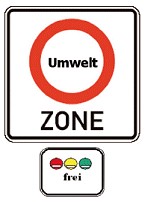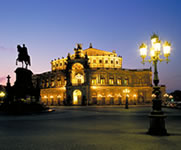
How to get an "Emission Badge" for your car?
When driving a rental car, the car rental companies usually provide vehicles that are equipped with all necessary stickers and permits meeting the latest standards required by law.
To obtain an Emission Badge for private vehicles, the only item required is a vehicle registration document (V5) and the vehicle itself. Badges are available from a wide range of suppliers including repair centers, car dealers, vehicle inspection (TÜV) stations and vehicle licensing offices. Emission Badges can also be purchased online before traveling to Germany from the TÜV. Prices can vary from €5 to €10 excluding shipping. Any Emission Badge issued is valid for the entire life of the vehicle and throughout Germany.
 Skip to content
Skip to navigation
Skip to subnavigation
Skip to search
Skip to content
Skip to navigation
Skip to subnavigation
Skip to search





 To improve the quality of life and most importantly the environment, 32 cities throughout Germany have or are about to implement new Low Emission Zones into which only vehicles displaying an "Emission Badge" (Umwelt Plakette) are allowed to enter.
To improve the quality of life and most importantly the environment, 32 cities throughout Germany have or are about to implement new Low Emission Zones into which only vehicles displaying an "Emission Badge" (Umwelt Plakette) are allowed to enter.
